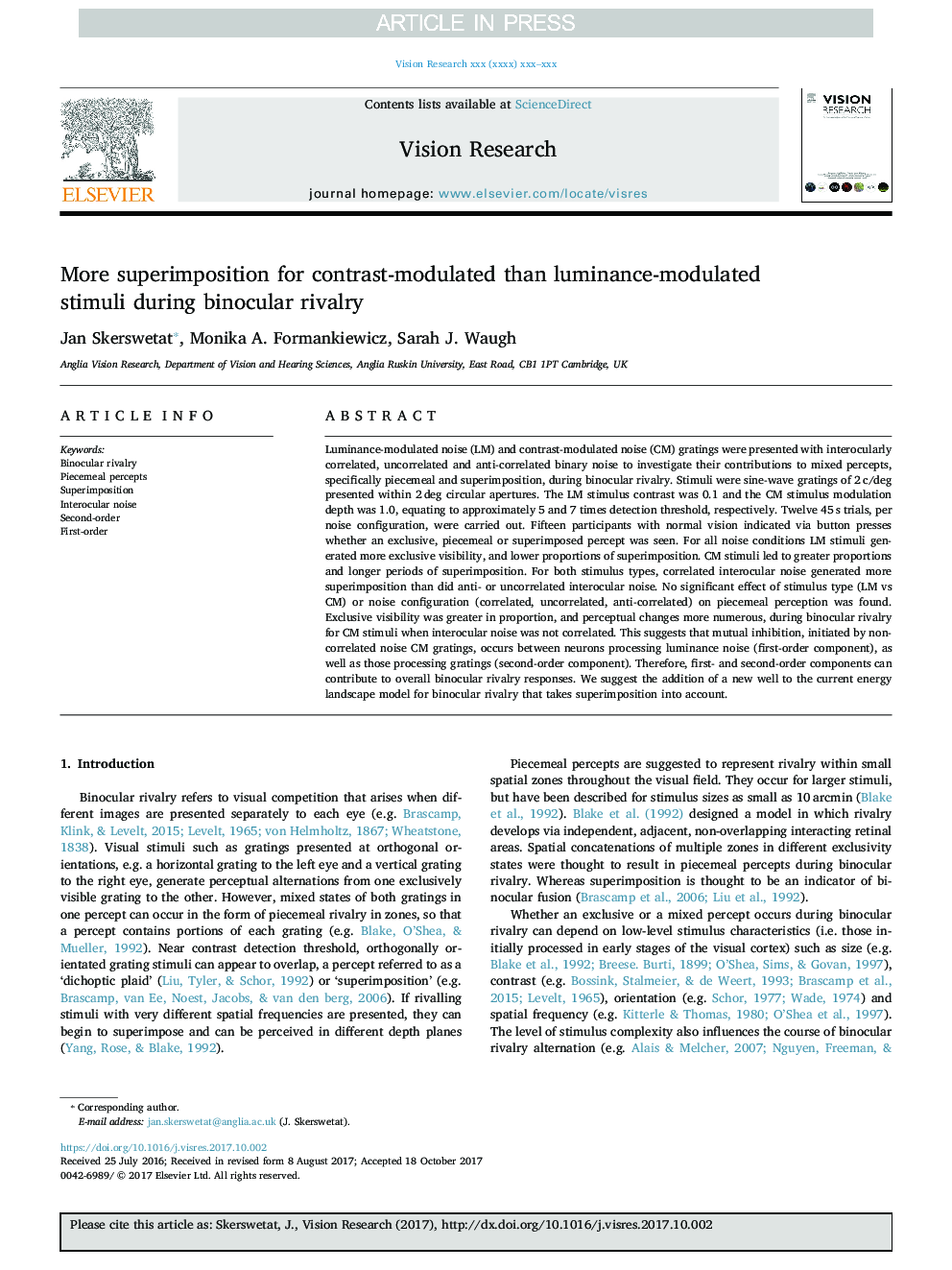| کد مقاله | کد نشریه | سال انتشار | مقاله انگلیسی | نسخه تمام متن |
|---|---|---|---|---|
| 8795338 | 1603157 | 2018 | 12 صفحه PDF | دانلود رایگان |
عنوان انگلیسی مقاله ISI
More superimposition for contrast-modulated than luminance-modulated stimuli during binocular rivalry
ترجمه فارسی عنوان
تکیه بیشتر برای کنتراست مدولاسیون از محرک های مدولاسیون روشنایی در دوران رقابت دوقطبی
دانلود مقاله + سفارش ترجمه
دانلود مقاله ISI انگلیسی
رایگان برای ایرانیان
کلمات کلیدی
موضوعات مرتبط
علوم زیستی و بیوفناوری
علم عصب شناسی
سیستم های حسی
چکیده انگلیسی
Luminance-modulated noise (LM) and contrast-modulated noise (CM) gratings were presented with interocularly correlated, uncorrelated and anti-correlated binary noise to investigate their contributions to mixed percepts, specifically piecemeal and superimposition, during binocular rivalry. Stimuli were sine-wave gratings of 2â¯c/deg presented within 2â¯deg circular apertures. The LM stimulus contrast was 0.1 and the CM stimulus modulation depth was 1.0, equating to approximately 5 and 7 times detection threshold, respectively. Twelve 45â¯s trials, per noise configuration, were carried out. Fifteen participants with normal vision indicated via button presses whether an exclusive, piecemeal or superimposed percept was seen. For all noise conditions LM stimuli generated more exclusive visibility, and lower proportions of superimposition. CM stimuli led to greater proportions and longer periods of superimposition. For both stimulus types, correlated interocular noise generated more superimposition than did anti- or uncorrelated interocular noise. No significant effect of stimulus type (LM vs CM) or noise configuration (correlated, uncorrelated, anti-correlated) on piecemeal perception was found. Exclusive visibility was greater in proportion, and perceptual changes more numerous, during binocular rivalry for CM stimuli when interocular noise was not correlated. This suggests that mutual inhibition, initiated by non-correlated noise CM gratings, occurs between neurons processing luminance noise (first-order component), as well as those processing gratings (second-order component). Therefore, first- and second-order components can contribute to overall binocular rivalry responses. We suggest the addition of a new well to the current energy landscape model for binocular rivalry that takes superimposition into account.
ناشر
Database: Elsevier - ScienceDirect (ساینس دایرکت)
Journal: Vision Research - Volume 142, January 2018, Pages 40-51
Journal: Vision Research - Volume 142, January 2018, Pages 40-51
نویسندگان
Jan Skerswetat, Monika A. Formankiewicz, Sarah J. Waugh,
